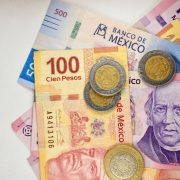
Asian stock markets moved higher on Thursday as investors reacted to the Federal Reserve’s decision to implement a larger-than-expected 50 basis point rate cut in an effort to prevent a potential US recession.
The move marks a significant pivot in US monetary policy, and global markets responded with mixed reactions.
Major indices show gains across Asia
Tokyo’s Nikkei 225 index led the charge, gaining 2.5% to close at 37,284.43.
The Hong Kong Hang Seng index also saw a 1% rise, finishing the day at 17,840.93, while the Shanghai Composite index advanced by 0.8% to 2,738.19.
Taiwan’s Taiex followed suit, climbing 1%. However, South Korea’s Kospi bucked the trend, losing 0.3% to close at 2,566.65, making it the only major Asian index to post losses.
The Indian stock market soared to record highs, with the Nifty up 0.68% to 25,551.65 and the Sensex climbing 0.71% to 83,542.65.
Analysts attribute the surge in India to increased foreign investor interest and expectations of further rate cuts by the Reserve Bank of India.
The upward movement in Asian markets reflects optimism that the Fed’s aggressive rate cut will provide relief to a global economy that has been grappling with the consequences of tighter monetary policy in the face of rising inflation.
Fed’s rate cut signals new phase in monetary policy
The Federal Reserve’s half-percentage point cut to the federal funds rate is its first in more than four years.
The decision comes as inflation in the US has eased from its peak two years ago, and the Fed is shifting its attention to stabilizing the job market and the broader economy.
Fed Chair Jerome Powell explained the rationale behind the move:
“The time to support the labor market is when it’s strong and not when you begin to see the layoffs. That’s the situation we’re in.”
Although the rate cut was largely anticipated by the markets, the extent of the reduction surprised some investors.
Wall Street’s response to the Fed’s decision was relatively muted, with the S&P 500 slipping 0.3%, the Dow Jones Industrial Average dropping 0.2%, and the Nasdaq composite losing 0.3%.
FIIs in southeast Asia likely to increase in coming months
Analysts have offered differing views on the Fed’s strategy and its impact on the markets.
Thomas Mathews of Capital Economics noted that the market’s reaction to the rate cut was restrained, saying,
“Markets barely reacted to the Fed’s 50 basis point rate cut, on balance, and our base case is that further cuts won’t move the needle too much either.”
Others are more optimistic about the long-term effects, particularly in emerging markets.
“We expect inflows into emerging markets to pick up post the Fed rate cut,” said market expert Ajay Bagga.
He highlighted that India and Southeast Asia are expected to benefit significantly from the cut, with foreign institutional investor (FII) inflows likely to increase in the coming months.
Bagga also predicted that other central banks, including the Reserve Bank of India (RBI), may follow suit, noting,
“We expect RBI to start rate cuts by December and to cut rates by 75 basis points over the next 12 months, which will benefit domestic cyclicals from financials to real estate and autos.”
Bank of Japan and Bank of England meetings await
While the Federal Reserve’s decision dominated headlines, investors are also watching closely as the Bank of Japan (BOJ) and the Bank of England (BOE) prepare for their own monetary policy meetings.
Neither central bank is expected to make immediate changes to their rates, but market experts suggest that the tone of their communications may offer clues about future policy directions.
Stephen Innes of SPI Asset Management commented on the global central banking landscape, saying,
“The focus has now decisively shifted to the labor market, and there’s a sense that the Fed is trying to strike a better balance between jobs and inflation.”
This shift is being closely monitored as other central banks may look to adopt similar approaches.
Gold and bond prices rise as investors seek safe havens
As markets digested the Fed’s rate cut, other asset classes saw notable movements.
Gold prices continued their rally, as investors sought safety amid global uncertainty.
Treasury yields also experienced fluctuations, with the 10-year Treasury yield rising to 3.70% from 3.65% late Tuesday, and the two-year yield increasing slightly to 3.62% from 3.60%.
Some analysts believe that the rate cut may help boost stock prices in the long term by lowering borrowing costs for companies and encouraging investments.
However, others caution that the Fed’s actions may signal underlying concerns about the strength of the US economy.
Global oil and currency markets remain volatile
In other market developments, crude oil prices dipped slightly. US benchmark crude lost 20 cents, trading at $69.68 per barrel, while Brent crude, the global standard, declined by 22 cents to $73.43 per barrel.
Currency markets also reacted to the Fed’s move, with the dollar rising against the yen to 143.37 from 142.29, while the euro slipped to $1.1101 from $1.1120.
These fluctuations reflect ongoing investor uncertainty about the broader economic outlook and the implications of the Fed’s rate cut for global trade and investment.
The post Asian markets cheer Fed’s first rate cut in over 4 years appeared first on Invezz











